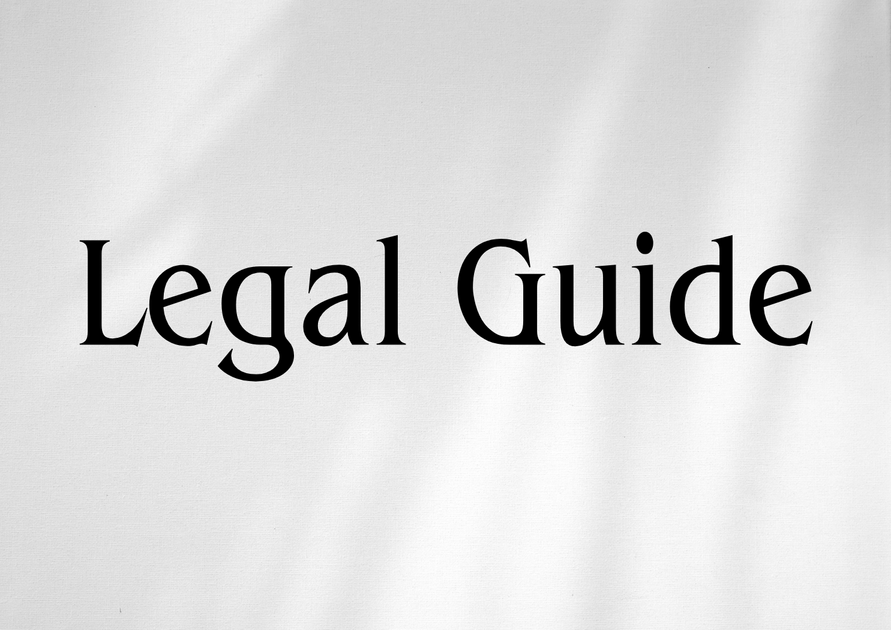Introduction
Corporate restructuring has emerged as a strategic imperative for businesses in the United Arab Emirates, driven by evolving market realities, regulatory changes, and the UAE’s agenda for global competitiveness. In recent years, significant updates to UAE legislation—including reforms to the UAE Federal Decree-Law No. 32 of 2021 on Commercial Companies (as amended)—have transformed the legal landscape for entities considering mergers, acquisitions, demergers, conversions, or other forms of restructuring. Understanding and effectively managing the legal, operational, and compliance aspects of restructuring is now more important than ever for companies seeking resilience, growth, and alignment with UAE’s economic vision. This article provides an in-depth advisory on the legal steps, strategic considerations, and compliance requirements for successful corporate restructuring under UAE law in 2025 and beyond. Our analysis draws on the latest federal statutes, ministerial guidelines, and practical insights gained from real-world consulting, helping executives, HR leaders, compliance officers, and legal professionals navigate this complex transformation with confidence.
Table of Contents
- Understanding Corporate Restructuring in the UAE: Key Legal Foundations
- Types of Corporate Restructuring Recognized Under UAE Law
- Legal Process and Steps: From Planning to Implementation
- Regulatory Authorities and Required Approvals
- Compliance Obligations, Due Diligence, and Risk Management
- Comparison: UAE Law 2025 Updates vs. Previous Framework
- Practical Strategies for Successful Corporate Restructuring
- Case Studies: Real-World Applications and Insights
- Risks and Penalties for Non-Compliance
- Conclusion and Forward-Looking Guidance
Understanding Corporate Restructuring in the UAE: Key Legal Foundations
The Legislative Backbone
Corporate restructuring in the UAE is primarily governed by Federal Decree-Law No. 32 of 2021 on Commercial Companies (replacing Federal Law No. 2 of 2015), along with sector-specific laws, Free Zone regulations, and complementary decrees such as Cabinet Resolution No. 58 of 2020 on Ultimate Beneficial Owner Procedures. These laws set out the conditions and procedures for restructuring, with the aim of ensuring transparency, creditor protection, market stability, and robust corporate governance.
Key Corporate Restructuring Mechanisms
The main restructuring mechanisms recognized in the UAE legal framework include:
- Mergers (by amalgamation or absorption)
- Demerger or Spin-off
- Conversion (change of legal form, e.g., LLC to PJSC)
- Acquisitions and Takeovers
- Share Buybacks and Capital Adjustments
- Voluntary Liquidation
Why Focus on Legal Strategy Now?
Given the pace of regulatory reform, especially with UAE law 2025 updates including enhanced disclosures, foreign ownership liberalisation, and ESG integration, ignoring the legal dimensions of restructuring exposes businesses to financial, operational, and reputational risk. Effective legal strategy delivers advantages in deal certainty, cost-efficiency, and compliance.
Types of Corporate Restructuring Recognized Under UAE Law
Mergers and Acquisitions
M&A transactions in the UAE are explicitly governed by Articles 284–286 of the Federal Decree-Law No. 32 of 2021, which stipulate the process for amalgamation (merger into a new entity) or absorption (one company absorbing another). Regulatory approval, creditor protection, and stakeholder notification are mandatory steps.
Demerger (Spin-offs)
The law permits companies to split into separate entities, with assets, liabilities, and contracts assigned based on an approved demerger plan. Key legal requirements include:
- Shareholder resolution (typically a special majority)
- Creditor notifications and the right to object
- Management and regulatory approval
- Notification and registration with the Department of Economic Development (DED), Securities and Commodities Authority (SCA), or relevant Free Zone Authority
Conversion of Legal Form
Conversions—such as from a Limited Liability Company (LLC) to a Public Joint Stock Company (PJSC)—are found in Articles 277–283 of the Decree-Law. The conversion process involves:
- Board and shareholder resolutions
- Audited financial disclosures
- Creditor protection measures
- Regulatory filings and licensing updates
Legal Process and Steps: From Planning to Implementation
| Stage | Key Actions | Legal References |
|---|---|---|
| Initial Planning | Feasibility study; alignment with business objectives | Board authority (Decree-Law Art. 277) |
| Due Diligence | Comprehensive review of assets, liabilities, contracts, workforce | Obligatory before approval (SCA, DED Guidelines) |
| Stakeholder Consent | Special shareholders’ resolution, notice to creditors | Art. 284, 285; MOHRE consultation for workforce transfers |
| Regulatory Approval | Filings with DED, SCA, Free Zone or relevant Ministry | Federal Decree-Law No. 32 of 2021; Sector directives |
| Implementation | Execution of legal documents and contracts, registration of changes, employee communication | Amendment of Commercial Register |
| Post-Restructuring Compliance | Update licensing, UBO/AML disclosures, and tax registration (FTA) if applicable | Cabinet Resolution No. 58 of 2020 |
Visual Suggestion: Process Flow Diagram
Visual depicting each restructuring phase and key legal checkpoints, enhancing clarity for boardroom presentations.
Regulatory Authorities and Required Approvals
Restructuring in the UAE requires alignment with several regulators. For most onshore companies, the Department of Economic Development is the primary registrar; for listed or capital market-related entities, the Securities and Commodities Authority (SCA) plays a key role. In Free Zones, entities must adhere to authorities such as the Dubai Multi Commodities Centre (DMCC), Dubai International Financial Centre (DIFC), or Abu Dhabi Global Market (ADGM).
| Authority | Jurisdiction | Main Role in Restructuring |
|---|---|---|
| DED | Onshore Companies (Mainland) | Licensing, registration, regulatory compliance |
| SCA | PJSCs and listed entities | Securities issuance, listing, M&A approvals |
| MOHRE | All employing entities | Labour and workforce compliance during transfers |
| Free Zone Authorities | DMCC, DIFC, ADGM etc. | Entity approval and re-registration within the zone |
| Ministry of Justice | Dispute resolution, notary services | Oversight if litigation or notarization is required |
Compliance Obligations, Due Diligence, and Risk Management
Due Diligence Best Practices
Comprehensive legal, financial, and operational due diligence is essential not just for risk management but for regulatory sign-off. Key elements include:
- Verifying corporate records and ownership (in line with Cabinet Resolution No. 58 of 2020 on UBO disclosure)
- Reviewing contracts for change-of-control provisions
- Mapping employee rights and obligations under UAE Labour Law (Federal Decree-Law No. 33 of 2021)
- Assessing outstanding liabilities, including secured debt and contingent obligations
- Ensuring compliance with AML and CFT frameworks
Compliance Checklist
| Area | Legal Reference | Action |
|---|---|---|
| Corporate Approvals | Decree-Law No. 32/2021, Arts. 277-286 | Board and GM resolutions, minutes |
| Creditor Protection | Decree-Law Art. 285, 286 | Notification, objection period, settlement |
| Employee Transfers | Labour Law No. 33/2021 | Contract amendments, MOHRE notifications |
| UBO Disclosure | Cabinet Resolution No. 58/2020 | Updated UBO register, filings |
| Regulatory Filings | Relevant Regulatory Guidelines | Updated commercial licenses, notifications |
Consultancy Insight:
Recent enforcement activity demonstrates that even technical lapses can trigger significant fines or reputational damage. Cross-functional collaboration—especially involving legal, compliance, and finance departments—yields more robust compliance outcomes.
Comparison: UAE Law 2025 Updates vs. Previous Framework
| Aspect | Previous Law (pre-2021) | Current Framework (2021 & 2025 Updates) |
|---|---|---|
| Foreign Participation | Up to 49% foreign ownership in Mainland Companies | Up to 100% under certain sectors, approved activities (Federal Decree-Law No. 26/2020, 32/2021) |
| M&A Approvals | Multiple overlapping approvals, lengthy timelines | Streamlined procedures, sector-specific guidance, digital filings |
| Creditor Rights | Notice periods, but less explicit objection procedures | Clear objection mechanisms and dispute resolution provisions |
| Employee Rights | Addressed via Labour Law, less integration in company law | Integrated with updated Labour Law, MOHRE coordination |
| UBO/AML | No explicit UBO requirement | Mandatory UBO disclosure, enhanced AML/CFT controls |
Professional Perspective
These legal advancements not only facilitate inward investment and international integration, but also necessitate agile corporate governance structures. The risk profile for directors and officers is also heightened, making legal guidance essential throughout the restructuring process.
Practical Strategies for Successful Corporate Restructuring
Strategic Planning and Stakeholder Mapping
Effective restructuring begins with robust strategic planning. Key elements include:
- Early engagement with legal counsel to map out restructuring objectives, possible risks, and timelines
- Comprehensive stakeholder mapping, including minority shareholders, lenders, employees, and regulatory authorities
- Scenario analysis for alternative structures (e.g., asset sale vs. share transfer vs. merger)
Proactive Regulatory Engagement
Direct and early engagement with regulators such as the DED, SCA, and Free Zone authorities streamlines approval and mitigates delays. Where cross-border components exist, address foreign legal issues, tax residency, and repatriation considerations.
Change Management and Communication
Transparent communication plans minimize disruption, particularly for staff and operational counterparties. Consider:
- Pre-emptively addressing employment transition issues under Federal Decree-Law No. 33/2021
- Timely communication with creditors and customers to avoid business interruption or litigation
Legal Consultant’s Recommendation
Establish a taskforce with legal, compliance, HR, and finance representation from the outset to ensure comprehensive due diligence, anticipate risks, and effectively implement all phases of restructuring.
Case Studies: Real-World Applications and Insights
Case Study 1: Successful Merger of Two Local LLCs
Two family-owned LLCs operating in manufacturing opted for a merger to consolidate supply chains and expand regionally. Working under Federal Decree-Law No. 32/2021 and DED guidelines, they secured: (i) Unanimous shareholder approval, (ii) proactive regulatory meetings, (iii) successful creditor negotiation, and (iv) seamless employee transfer through MOHRE. The newly structured entity increased competitive advantage and access to new financing.
Case Study 2: Free Zone Demerger with Cross-Border Implications
A technology firm in Dubai Internet City undertook a demerger, spinning off its SaaS business line to a new ADGM company. Key complexities included aligning Free Zone transfer rules and fulfilling UBO and AML requirements for both entities. Early engagement with both Free Zone authorities, precise contract novation, and thorough tax residency analysis underpinned a successful implementation.
Risks and Penalties for Non-Compliance
Common Risks and Regulatory Sanctions
| Breach Type | Legal Reference | Penalty / Consequence |
|---|---|---|
| Failure to Notify Creditors | Decree-Law No. 32/2021, Art. 285 | Transaction may be void; possible compensatory damages |
| UBO Non-Disclosure | Cabinet Resolution No. 58/2020 | Up to AED 100,000 fine; registration suspension |
| Labour Law Breach | Decree-Law No. 33/2021 | MOHRE fines; dispute litigation risk |
| Unauthorized Merger/Conversion | Decree-Law No. 32/2021, Art. 281 | Administrative penalties; reversal of transaction |
Practical Compliance Strategies
- Establish a legal compliance calendar, mapping all filings and notices relevant to the restructuring timeline
- Document stakeholder consents and maintain a clear audit trail of decision-making
- Retain specialist legal counsel for cross-border and sector-specific guidance
Conclusion and Forward-Looking Guidance
Corporate restructuring in the UAE is no longer simply technical or administrative; it is a strategic process embedded in the country’s broader vision for economic diversification, innovation, and global integration. The UAE’s dynamic legal environment—with the 2025 updates to the Commercial Companies Law, expanded foreign ownership rights, UBO obligations, and a focus on ESG—demands forward-thinking legal strategies, meticulous planning, and strict compliance. For boards, executives, and legal teams, early and continuous legal engagement is essential to mitigate risk, capture market opportunities, and remain compliant. As the UAE continues to update its legal and regulatory landscape, best-in-class corporate governance—anchored in solid legal advice—will distinguish leading corporations in the coming decade.
Best Practice Checklist (Suggested Visual)
- Begin planning early, with legal, tax, and regulatory input
- Conduct holistic due diligence across operational, financial, and legal dimensions
- Secure clear stakeholder and authority approval at every step
- Systematically update all registers, licenses, and disclosures post-restructuring
- Monitor new legal developments for ongoing compliance
For tailored advice, companies should consult with UAE-licensed legal advisors to ensure every stage of restructuring aligns with the most current legislative requirements as published in the Federal Legal Gazette and relevant government portals.



